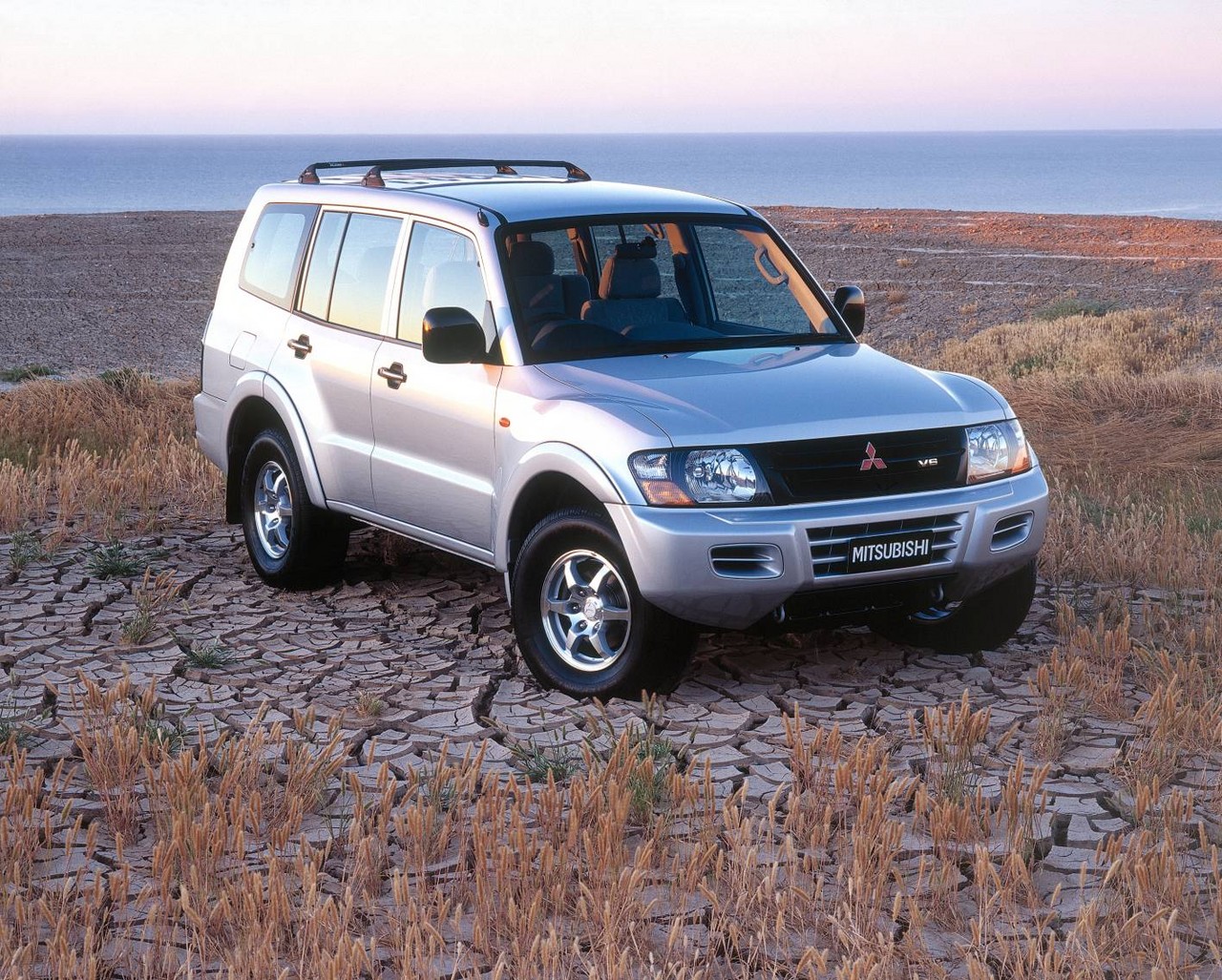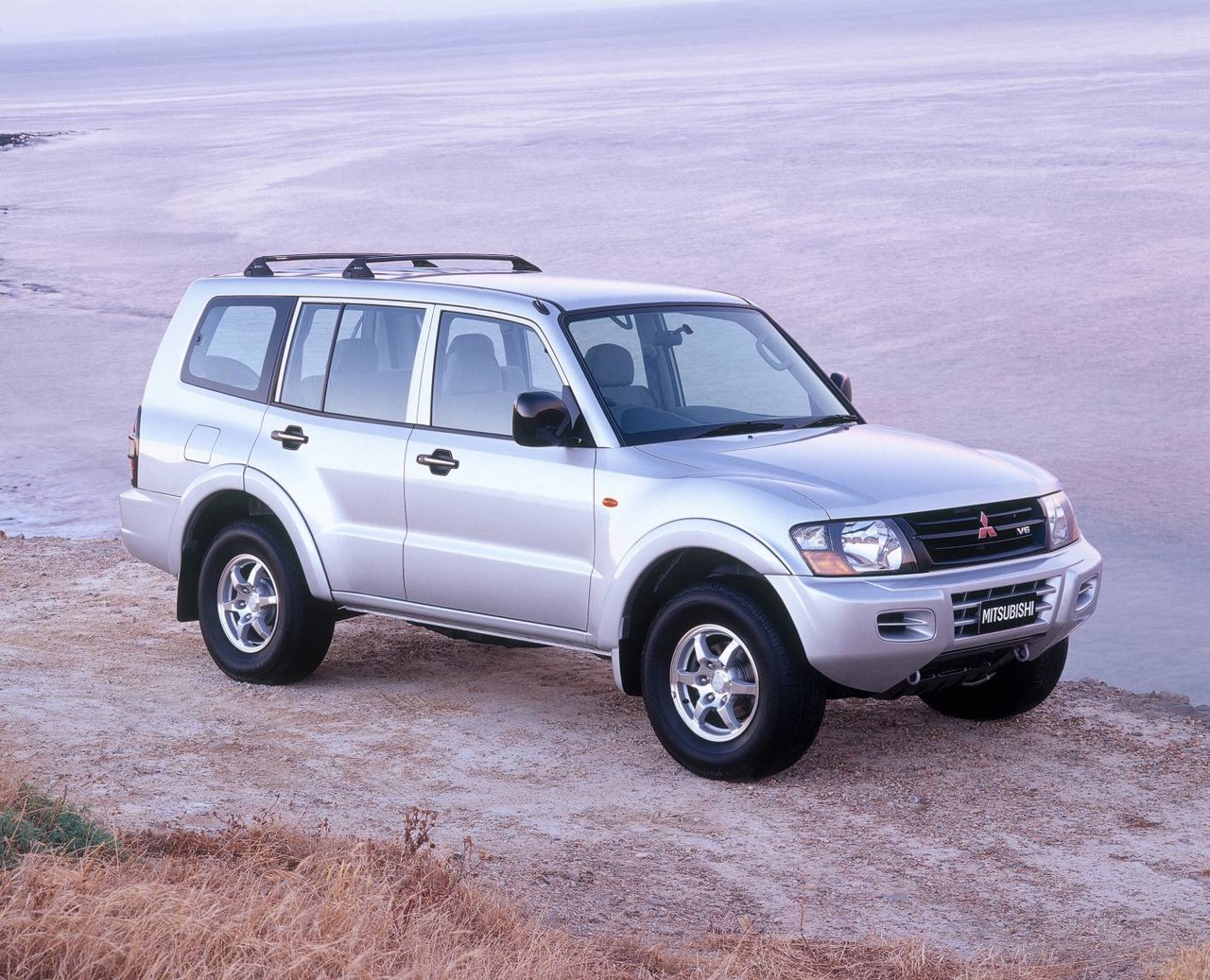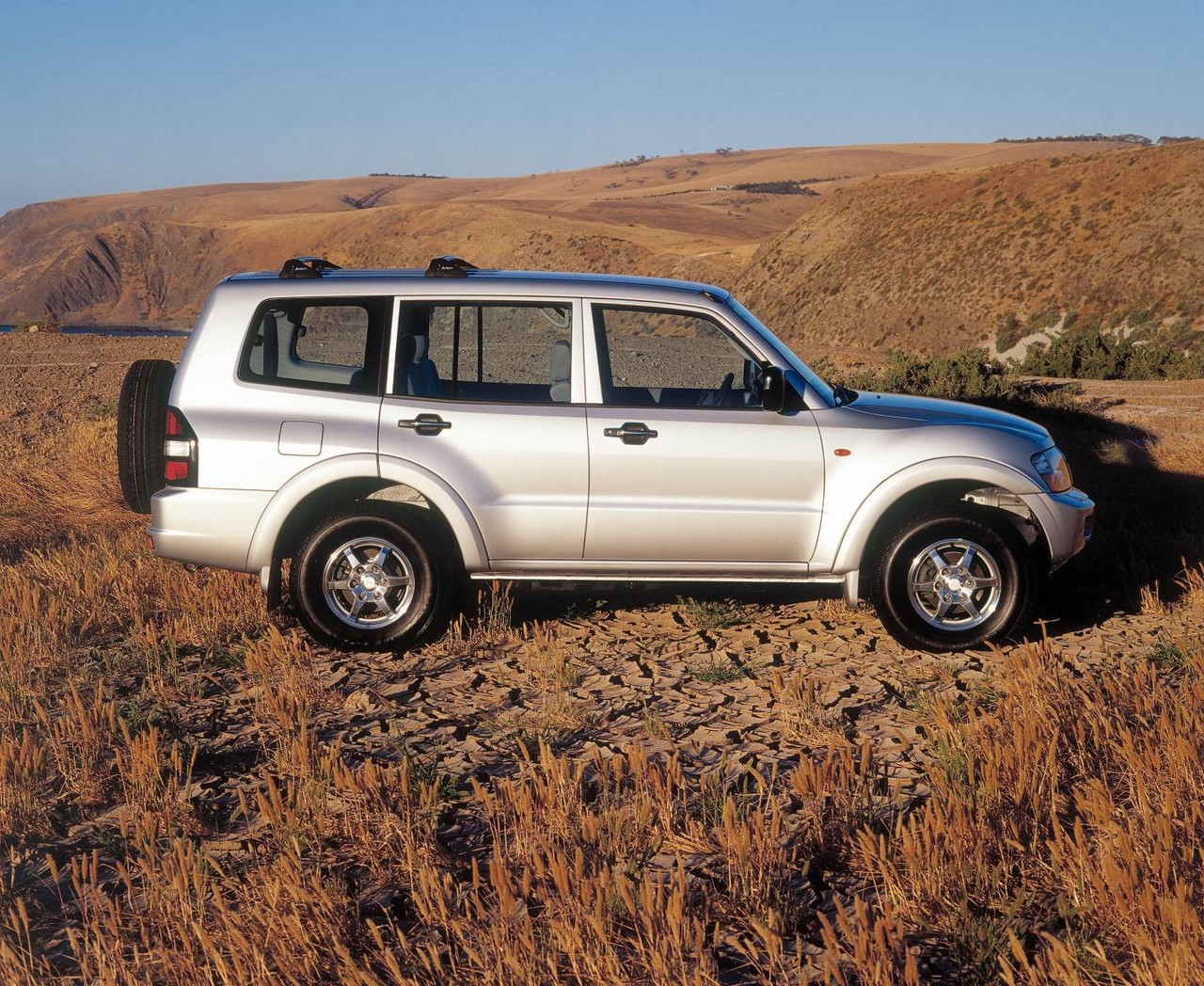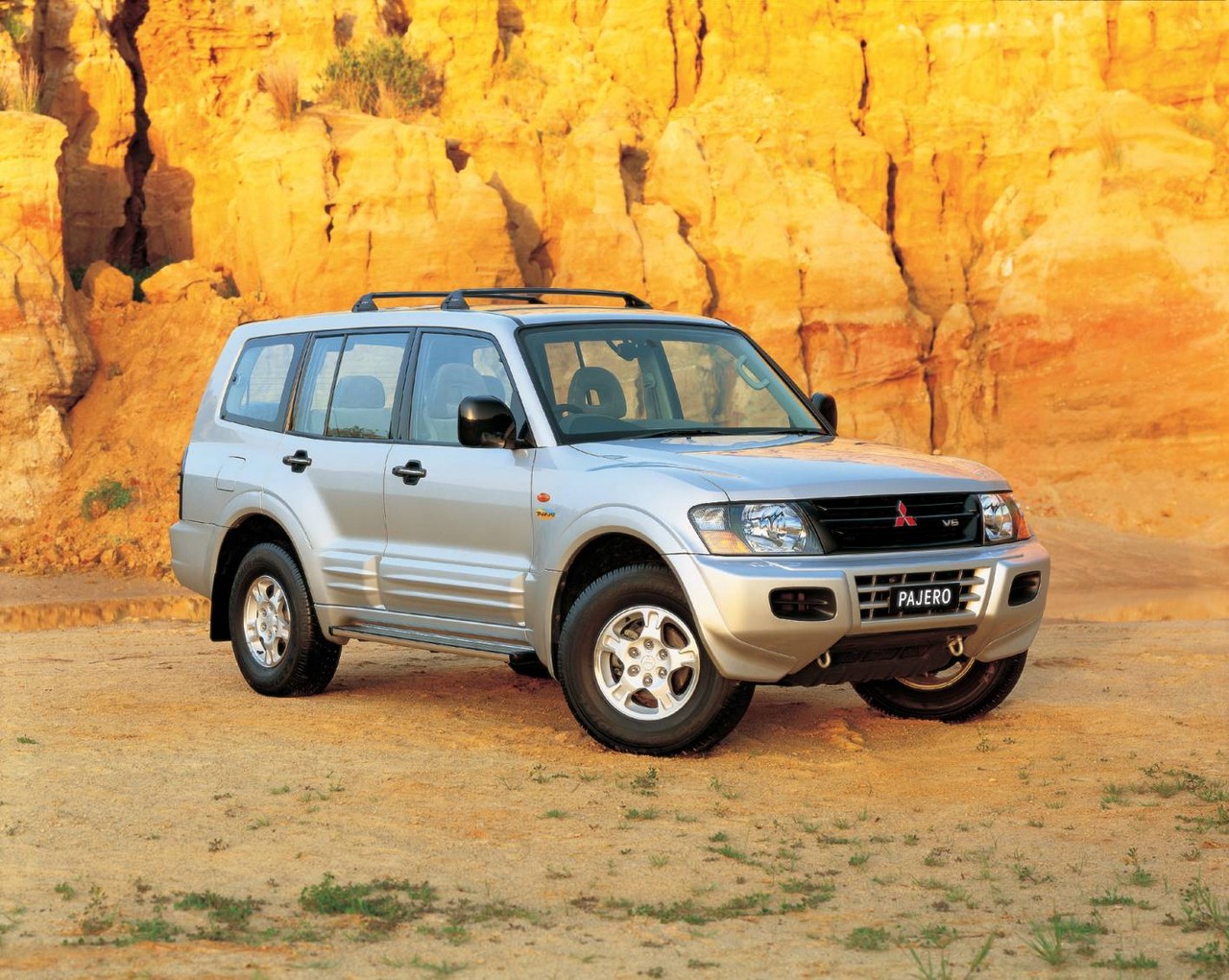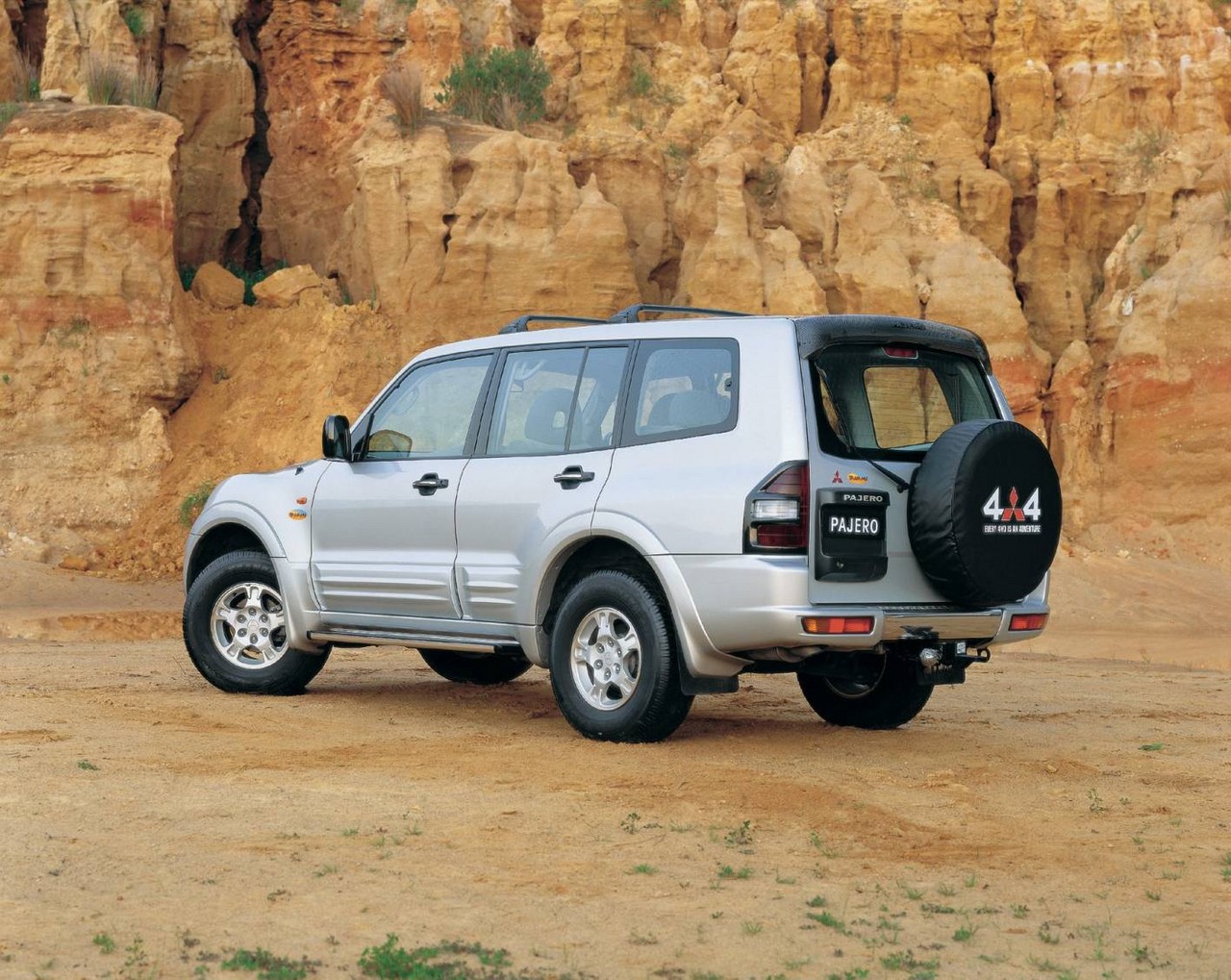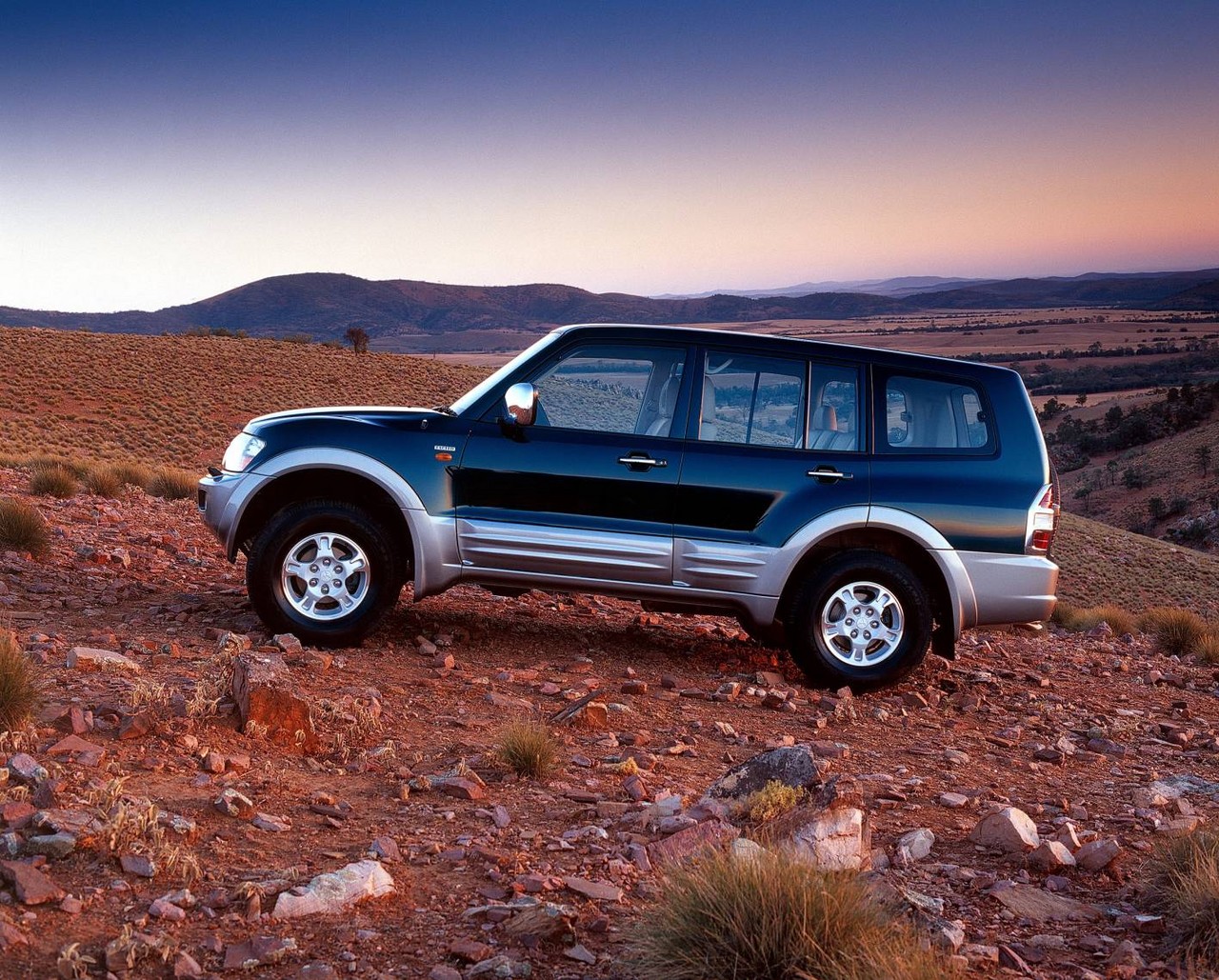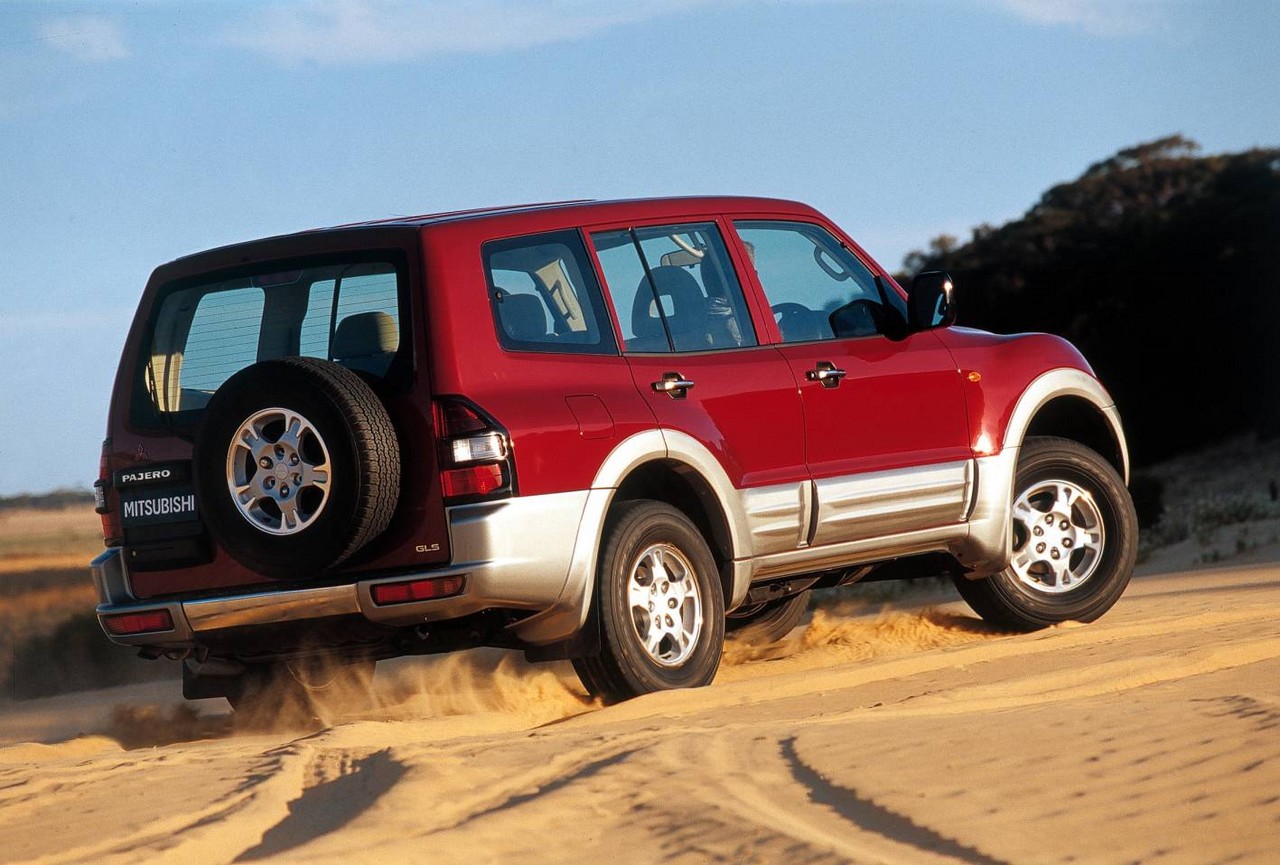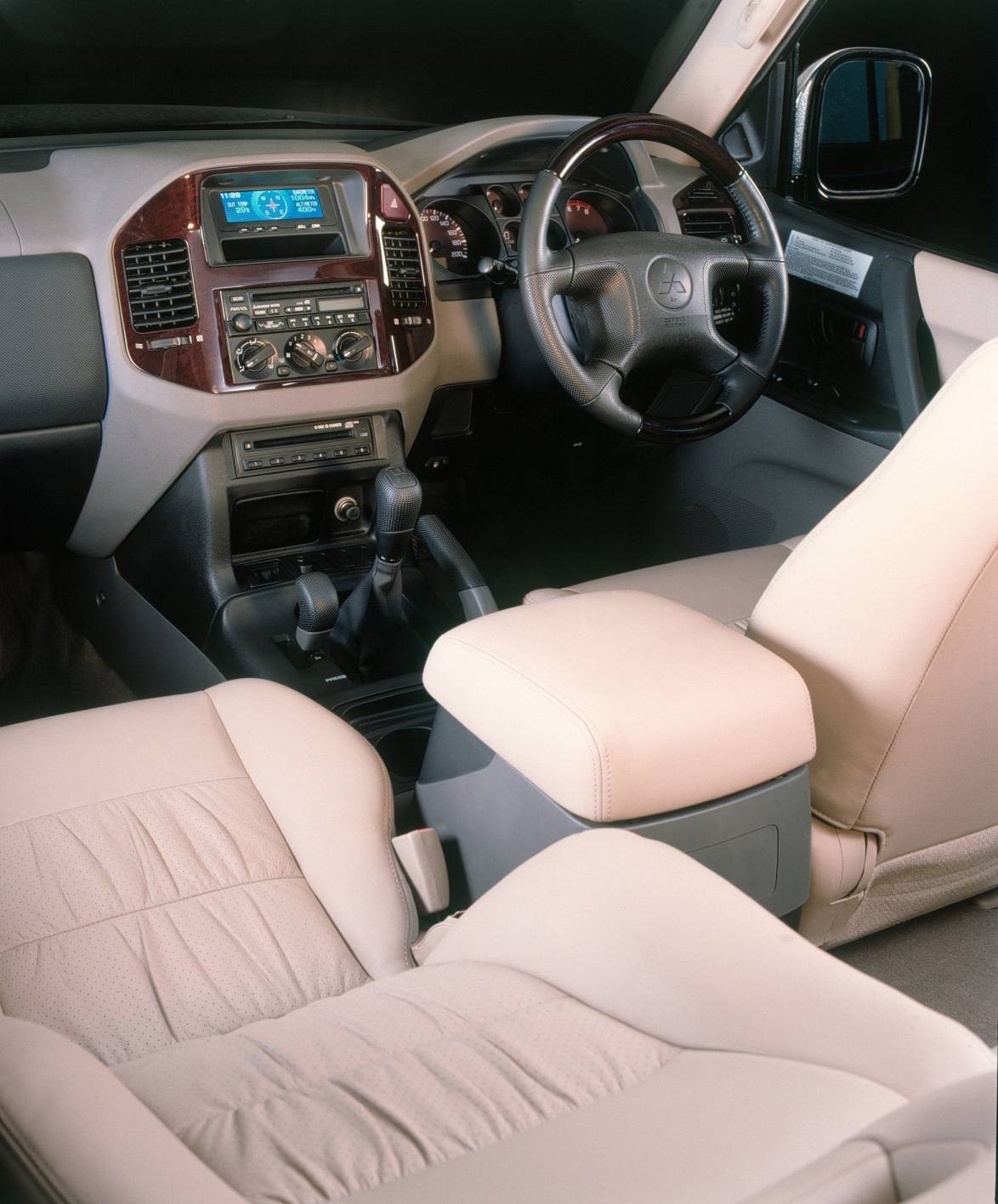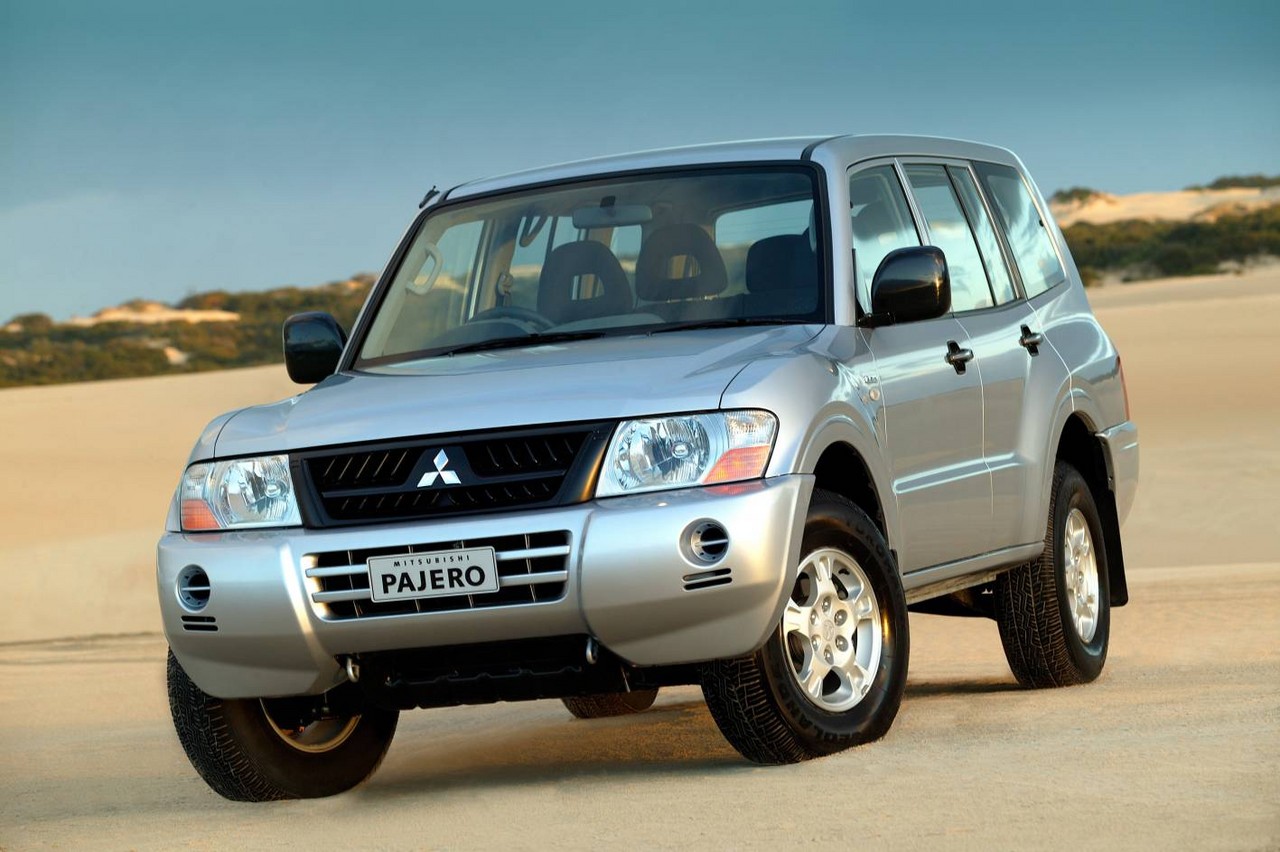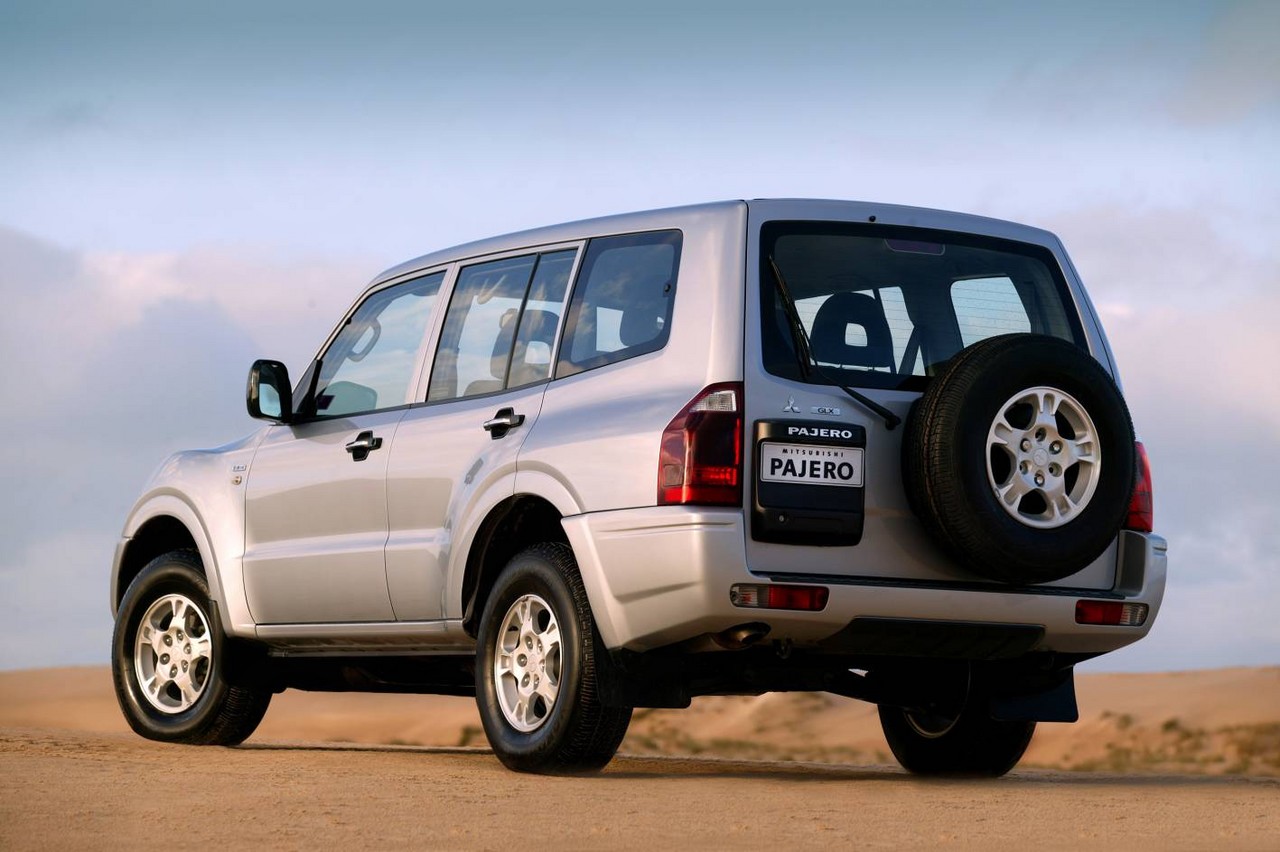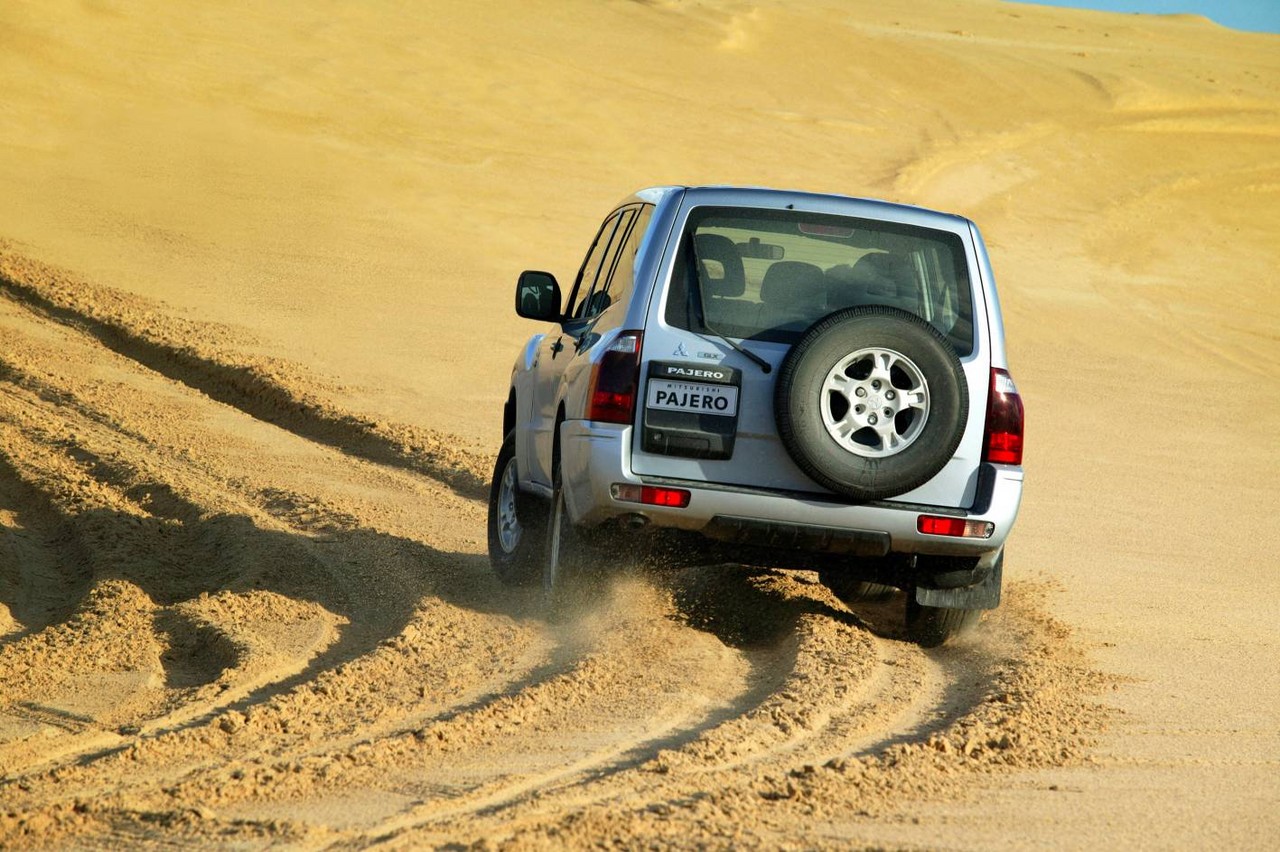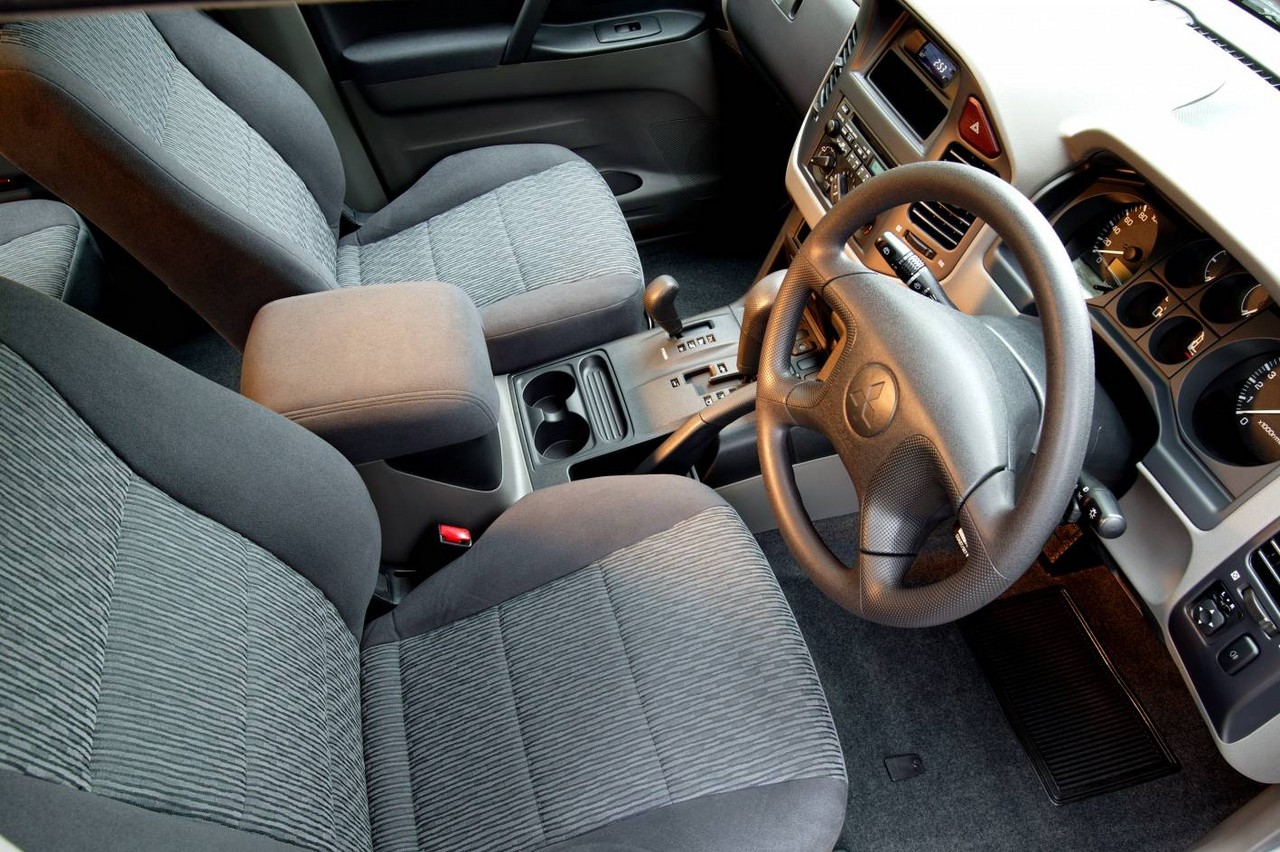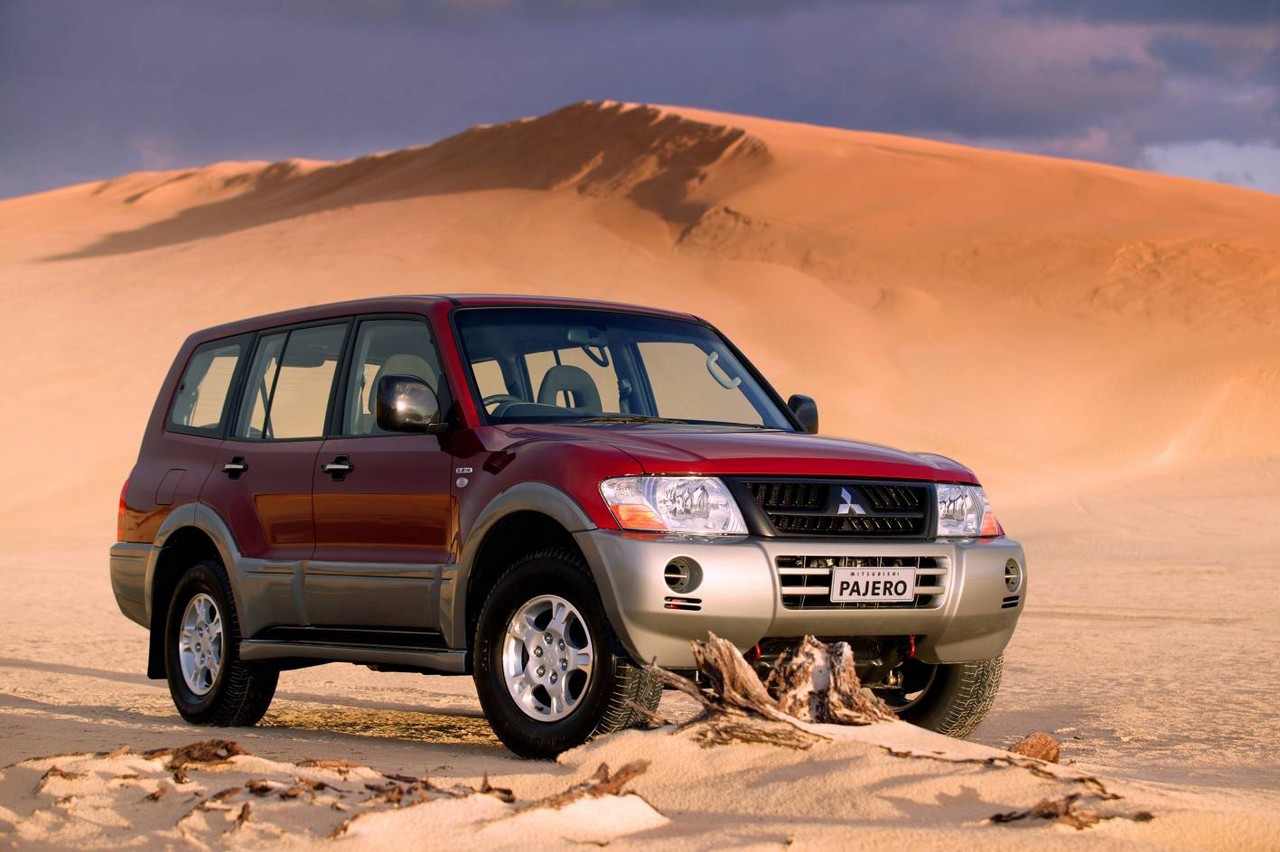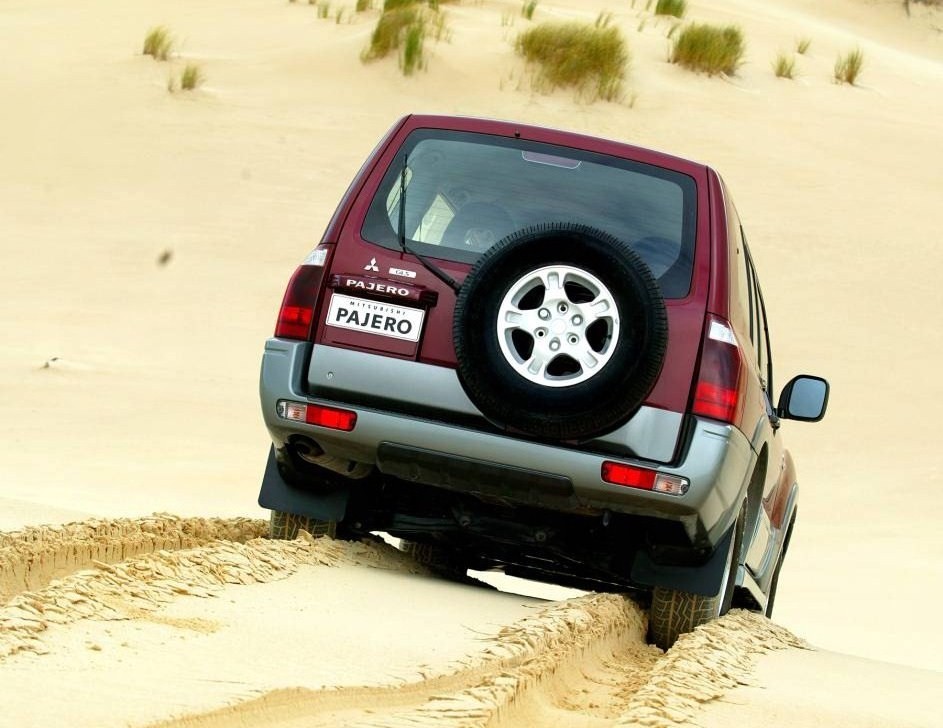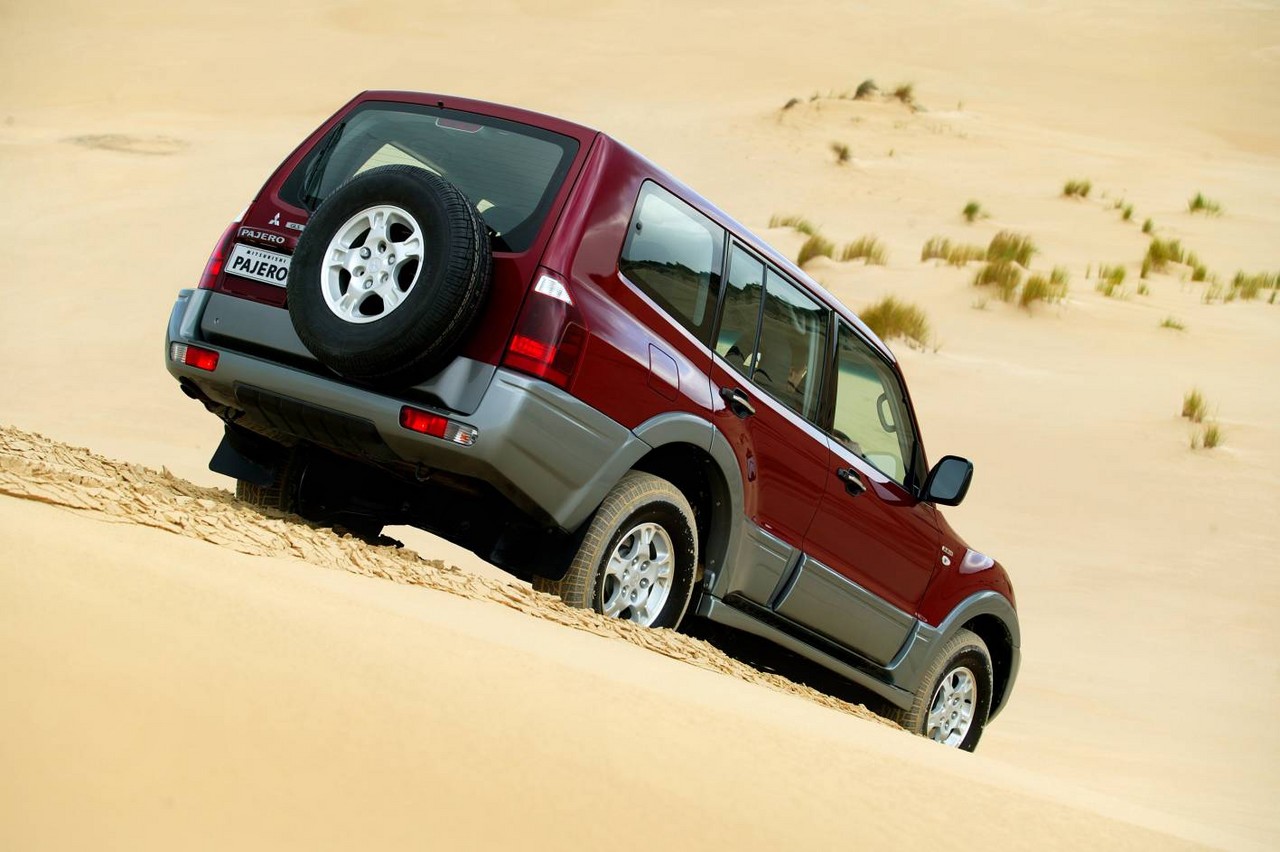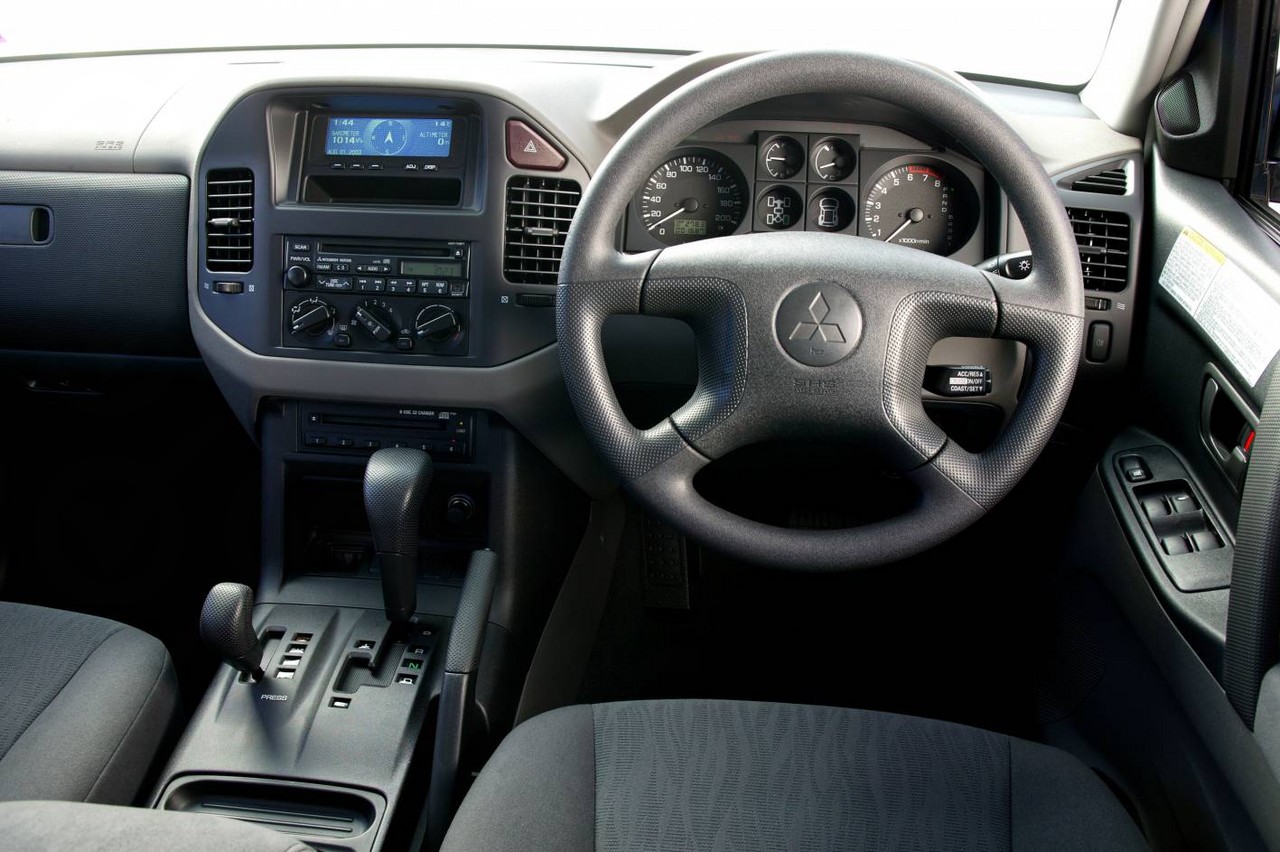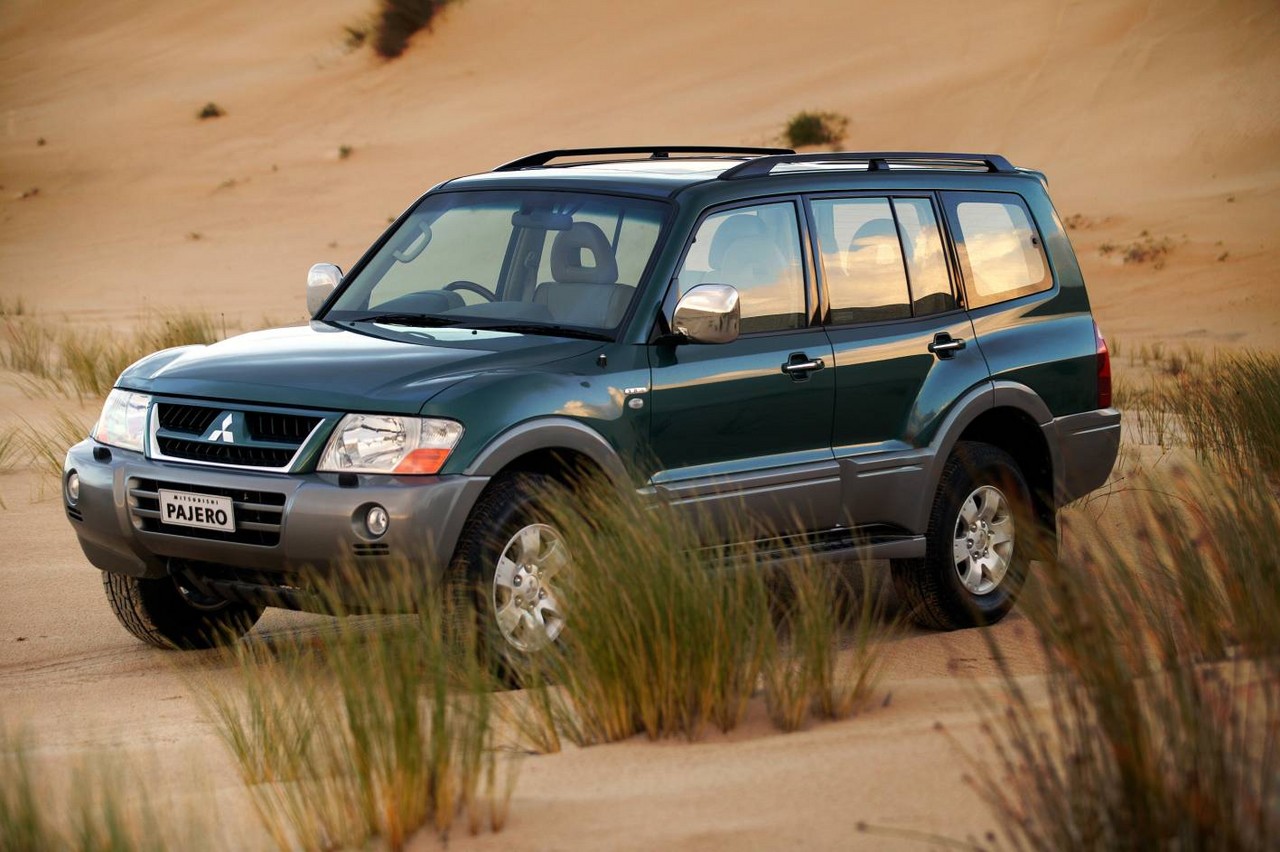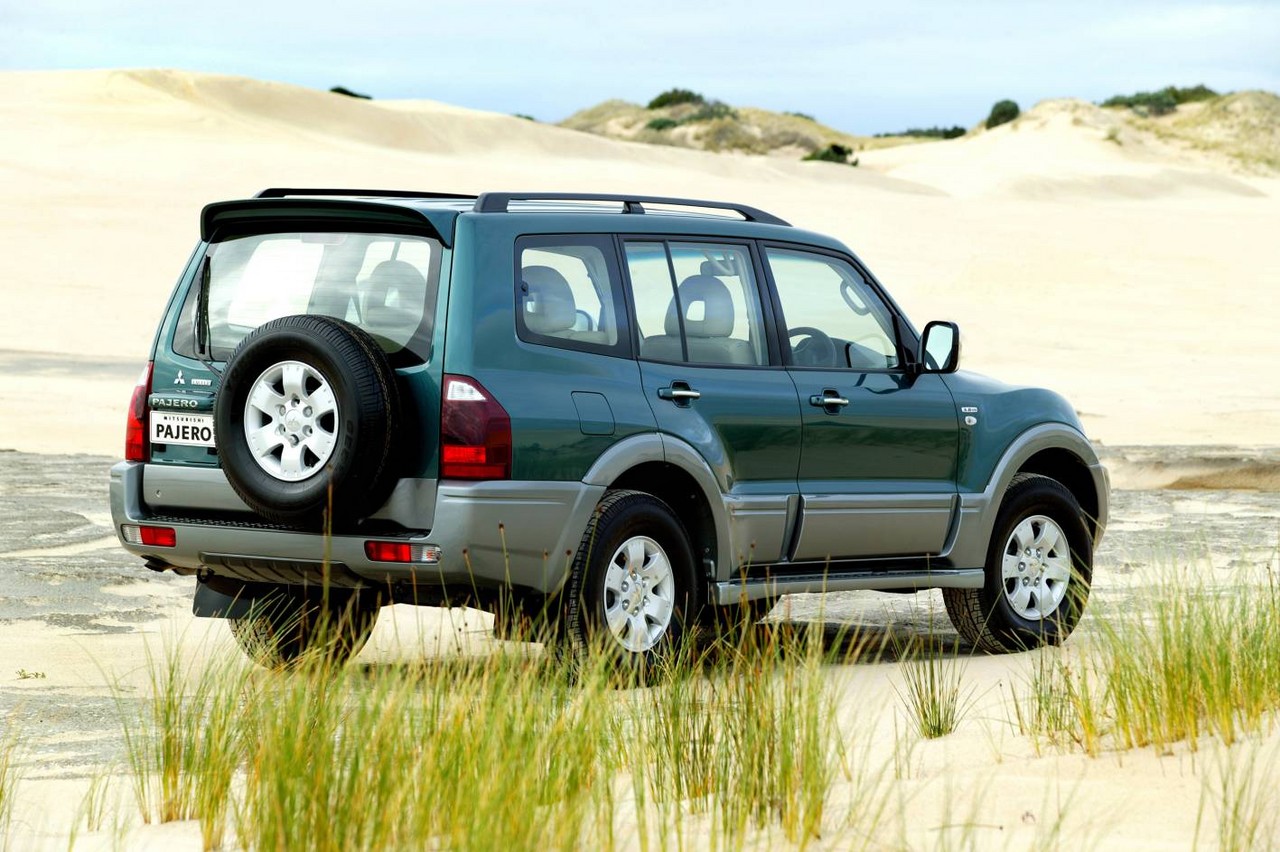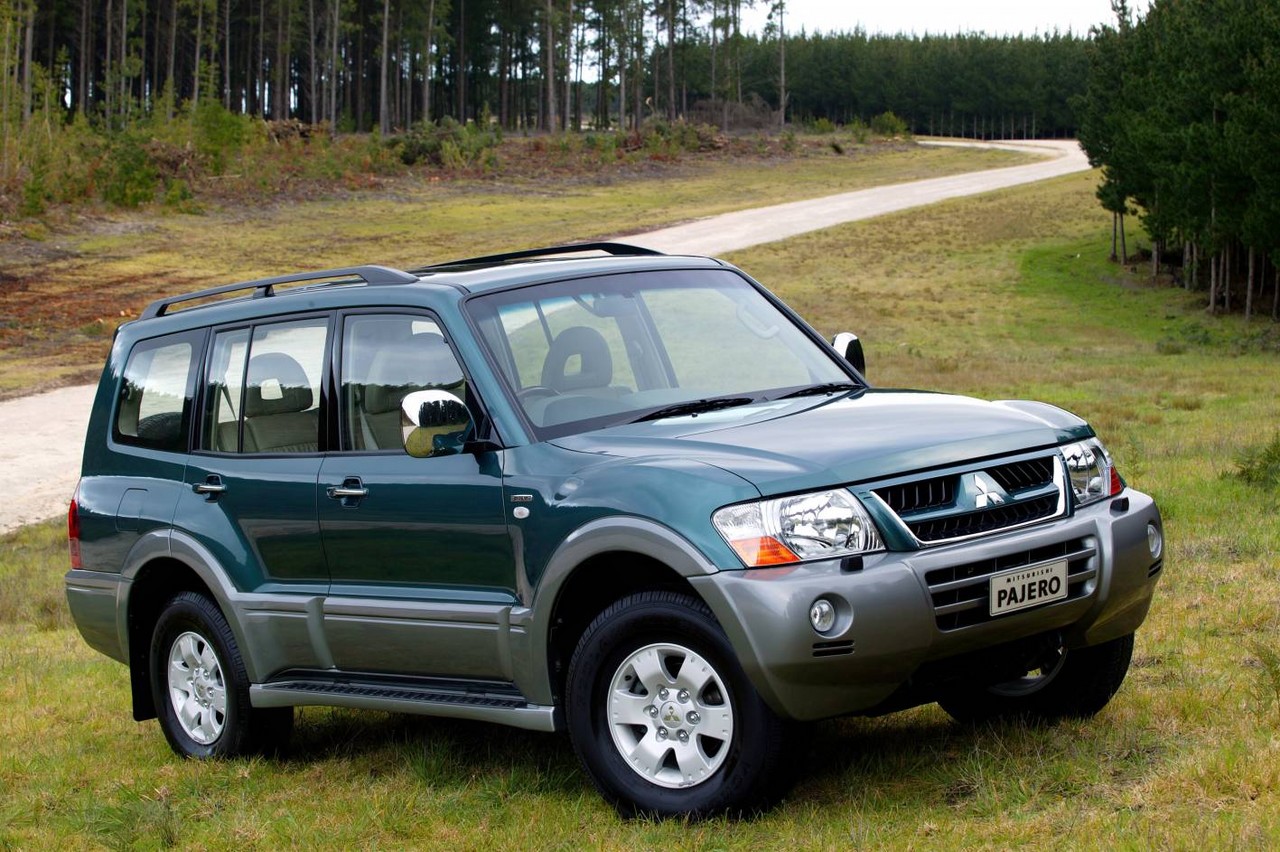
- Responsive 3.2-litre turbo-diesel engine
- Impressive dynamics by class standards
- Off-road capability
- Generally comfortable ride…
- … though suspension lacks low-speed compliance
- Noisy suspension operation
- Noise from turbo-diesel engine when accelerating
- Rear seats too firm for long trips
- Poor audio quality
- Awkward operation for side-hinged tailgate
Review: Mitsubishi NM Pajero (2000-02)
Overview
Released in May 2000, the Mitsubishi Mk.3 Pajero was a four-wheel drive wagon. Manufactured in Sakahogi, Japan, the NM Pajero was initially available with either a 2.8-litre turbo-diesel 4M40 engine or a 3.5-litre V6 6G74 petrol engine. The NM Pajero range initially consisted of GL, GLX, GLS and Exceed variants – of these, the GL had five seats, while the others all had seven.
In May 2002, the 2.8-litre turbo-diesel engine was replaced with a 3.2-litre unit (Mitsubishi’s 4M41 engine) which had direct-injection (i.e. fuel sprayed directly into the combustion bowl on the top of the piston), double overhead cams and four valves per cylinder.
Compared to its Mk.2 predecessor, the Mk.3 Pajero was 60 mm longer (at 4795 mm), 100 mm wider (1875 mm), 35 mm lower (1855 mm) and had a 55 mm longer wheelbase (2780 mm); ground clearance also increased by 20 mm to 235 mm. Furthermore, the Mk.3 Pajero had a one-piece monocoque bodyshell with an integral frame. Combined with high-strength steel, the bodyshell achieved a three-fold increase in body bending and torsional strength.
The Mk.3 Pajero had independent double wishbone front suspension (previously torsion bear) and multi-link rear suspension, both with anti-roll stabiliser bars. The Mk.3 Pajero also introduced a new rack and pinion steering system.
| Engine | Variant | Trans. | Year | Peak power | Peak torque |
|---|---|---|---|---|---|
| 2.8-litre turbo-diesel I4 | GL, GLX, GLS, Exceed |
5sp man. | 2000-02 | 92 kW at 4000 rpm | 292 Nm at 2000 rpm |
| GLX Plus | 5sp man. | 2000-01 | |||
| Dakar, Tanami |
5sp man. | 2001 | |||
| 3.2-litre turbo-diesel I4 | GLX, GLS, Exceed |
5sp man., 5sp auto |
2002 | 121 kW at 3800 rpm | 373 Nm at 2000 rpm |
| 3.5-litre petrol V6 | GL | 5sp man. | 2000-02 | 140 kW at 5000 rpm | 303 Nm at 3500 rpm |
| GLX, GLS, Exceed |
5sp man., 5sp auto |
2000-02 | |||
| GLX Plus | 5sp man., 5sp auto |
2000-01 | |||
| Dakar, Tanami |
5sp man., 5sp auto |
2001 |
Easy Select and Super Select 4WD modes
The Mk.3 Pajero had a two-setting constant mesh torque transfer unit which incorporated a centre differential with planetary gears and a viscous coupling unit. The GL variants were fitted with an ‘Easy Select’ 4WD with three drive modes:
- 2H: rear-wheel drive, viscous coupling unit (VCU) not engaged and high range gearing;
- 4H: four-wheel drive, VCU engaged for a 50:50 front/rear torque split and high range gearing; and,
- 4L: four-wheel drive, VCU engaged 50:50 front/rear torque split and low range gearing.
- 2H: rear-wheel drive (as above);
- 4H: four-wheel drive with a 33:67 front/rear torque split for low traction situations;
- 4HLc: VCU engaged for a 50:50 front/rear torque split – suitable for traction on low grip surfaces such as sand and snow; and,
- 4LLc: torque sent forward, bypassing the VCU and with a gear reduction ratio of 1.90:1.
All other variants had the ‘Super Select’ 4WD system which included four drive modes:
With the Super Select system, drive modes could be engaged ‘on the fly’ via an electronically-controlled transfer lever, with the exception of 4LLc which required the vehicle to be stationary.
Safety equipment
Standard safety equipment for the NM Pajero consisted of a driver’s airbag. The Exceed was further equipped with a front passenger airbag, ABS and electronic brake force distribution.
From April 2001, the GLS was fitted with a front passenger airbag.
Features
Standard features for the Pajero GL included a four speaker sound system with a CD player, air conditioning, split and folding second row seats, remote central locking, power mirrors, a tilt adjustable steering wheel and an immobiliser.
In addition to its third row of seats, the Pajero GLX added cruise control and power windows. The GLS variant was further equipped with 16-inch alloy wheels and an RV meter, a coloured LCD in the centre dash module which displayed the time, date, a compass, outside temperature, barometric pressure gauge, altimeter, wheel speed indicator for vehicles with ABS and service maintenance records.
The range-topping Pajero Exceed was distinguished by its six speaker sound system with a six-disc CD player, dual-zone air conditioning, a power adjustable driver’s seat, leather seat trim and front fog lights. From April 2001, the Exceed was fitted with dual-zone climate control air conditioning.
2000 Pajero GLX Plus
In December 2000, GLX Plus variants were released. Compared to the standard GLX, the Pajero GLX Plus added 16-inch alloy wheels and a six-disc CD player. The GLX Plus was also fitted with a sports roof rack and a heavy duty square hitch load equalising tow bar. Visually, the GLX Plus variants could be identified by their body-coloured fender flares and bumpers, and spare wheel cover.
2001 Pajero Dakar
In May 2001, Dakar variants were released to commemorate the first, second and fifth places of Pajeros in the Paris-Dakar rally. Based on the GLX, the Pajero Dakar was further equipped with 16-inch alloy wheels and a six-disc CD player. Visually, the Dakar variants could be identified by their body-coloured bumpers and wheel-arch flares, rear roof spoiler and ‘Dakar’ badging.
2001 Pajero Tanami
In October 2001, the limited-run Pajero Tanami was released. Named after the Tanami desert, the Pajero Tanami was based on the GLS but added side steps, a heavy duty towbar, sports roof racks, tailored floor mats, a rear dust deflector, vinyl spare wheel cover and ‘Tanami’ badging. In NSW, the Tanami was fitted with a six-disc CD player; in other states, however, the Tanami was fitted with an airbag-compatibility alloy bullbar.
Review: Mitsubishi NP Pajero (2002-06)
Overview
Released in November 2002, the NP Pajero introduced a revised range as the GL variant was discontinued. Initially, there was a choice of 3.2-litre turbo-diesel and a 3.5-litre V6 petrol engines. However, the 3.5-litre V6 was effectively replaced with a more powerful 3.8-litre unit from October 2003, though the 3.5-litre V6 continued to be offered into 2004. Compared to its NM predecessor, the NP Pajero could be identified by its more aggressive grille, new bumpers and spare tyre cover, standard side steps and more subtle exterior cladding.
| Engine | Variant | Trans. | Year | Peak power | Peak torque |
|---|---|---|---|---|---|
| 3.2-litre turbo-diesel I4 | GLX, GLS |
5sp man., 5sp auto |
2002-06 | 121 kW at 3800 rpm | 373 Nm at 2000 rpm |
| VRX | 5sp man., 5sp auto |
2006 | |||
| Platinum Edition | 5sp auto | 2005 | |||
| Exceed | 5sp auto | 2002-06 | |||
| 5sp man. | 2002-02 | ||||
| 3.5-litre petrol V6 | GLX, GLS |
5sp man., 5sp auto |
2002-04 | 140 kW at 5000 rpm | 303 Nm at 3500 rpm |
| Exceed | 5sp auto | 2002-03 | |||
| 3.8-litre petrol V6 | GLX, GLS |
5sp man., 5sp auto |
2003-06 | 150 kW at 5000 rpm | 314 Nm at 3250 rpm |
| VRX | 5sp man., 5sp auto |
2006 | |||
| Platinum Edition | 5sp auto | 2005 | |||
| Exceed | 5sp auto | 2003-06 |
Safety equipment
Initially, standard safety equipment for the NP Pajero included a driver’s airbag and traction control (with engine brake assist control – a form of hill descent control), while diesel models were also fitted with electronic stability control. Beyond this, the GLS and Exceed were also fitted with a passenger’s airbag, while the range-topping Exceed was also equipped with front side airbags, ABS and electronic brake force distribution.
From November 2003, dual front airbags, ABS, electronic brake force distribution and front seatbelt pretensioners were standard across the range; electronic stability control and traction control were also standard on models with 3.2-litre turbo-diesel and 3.8-litre petrol V6 engines.
ANCAP crash testing
In ANCAP crash testing, a 2004 Pajero – that was equipped with dual front airbags and front side airbags – received a four star adult occupant protection rating with a score of 25.88 out of 37. In the frontal offset crash test, protection from serious chest and leg injury was marginal for the driver. In the side impact test, a default score was awarded.
Features
Standard features for the Pajero GLX included a four speaker sound system with a CD player, air conditioning, cruise control, 60/40 split and folding second row seats, remote central locking, power windows and power mirrors, a tilt and reach adjustable steering wheel, height adjustable driver’s seat, RV meter and an immobiliser.
Beyond this, the Pajero GLS added 16-inch alloy wheels, six speaker sound system with CD player, integrated side steps and a power antenna. The range-topping Exceed added a six speaker sound system with six-stack CD player, leather seats, leather steering wheel, four-way power adjustable passenger seat, roof rails, front fog lights and roof deflector.
November 2003: Pajero update
From November 2003, the GLX was fitted with 16-inch alloy wheels and the GLS received a six-stack CD player. The VRX was similarly equipped to the GLS, but with 17-inch wheels and sporting highlights. The limited run Platinum variant was also based on the GLS, but added 17-inch alloy wheels, DVD player with wireless headphones, black leather and grey alcantara suede seat trim, power adjustable driver’s seat, rear roof spoiler, front fog lamps and privacy glass.
September 2004: Pajero update
There was a further update in September 2004: the Pajero Exceed was fitted with 17-inch alloy wheels, multi-media entertainment system – with MP3-compatible CD player, DVD player, TV tuner, reversing camera and satellite navigation – heated front seats and privacy glass from the rear door windows back. The Pajero GLS also underwent minor cosmetic updates.
Related links
